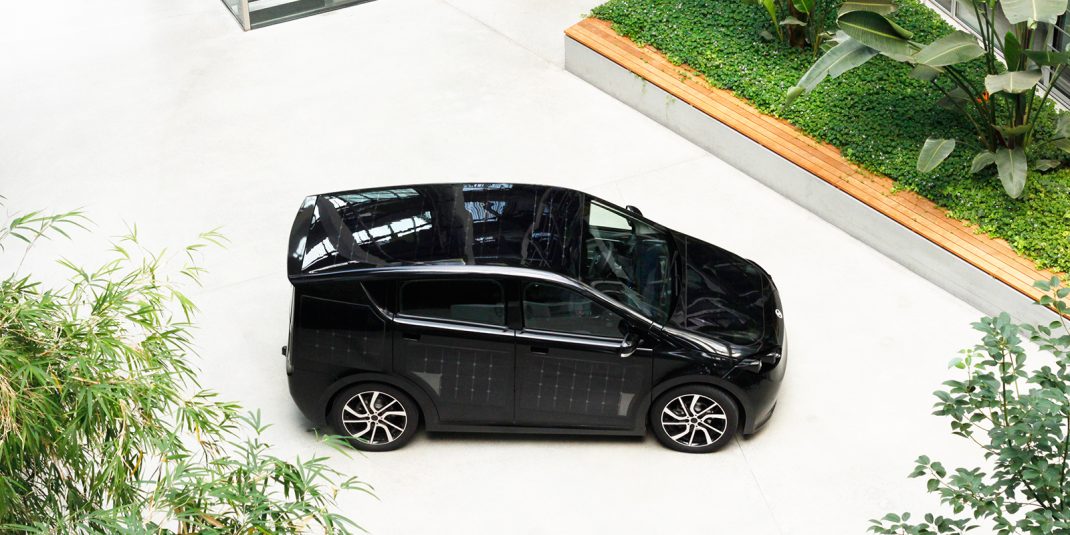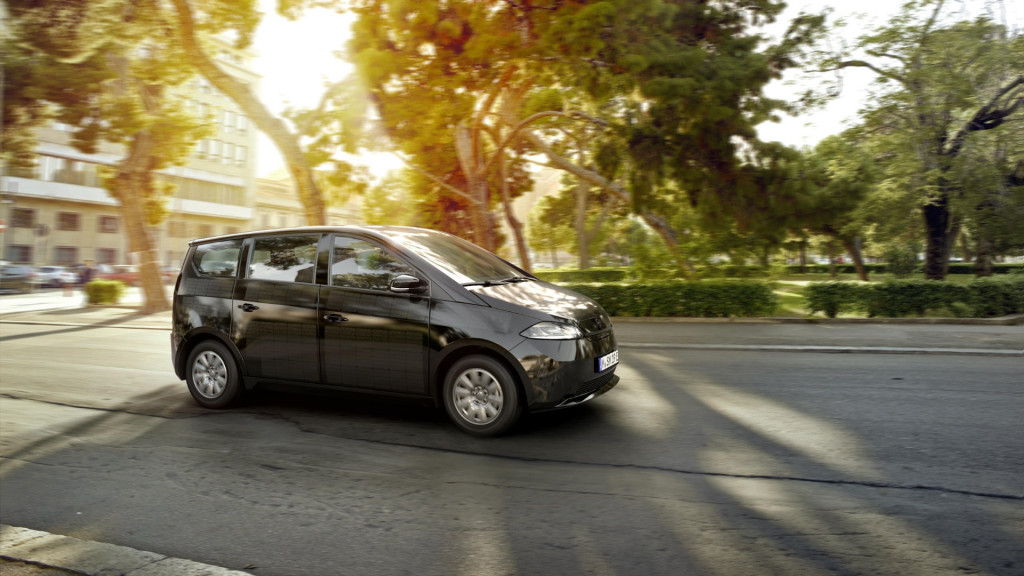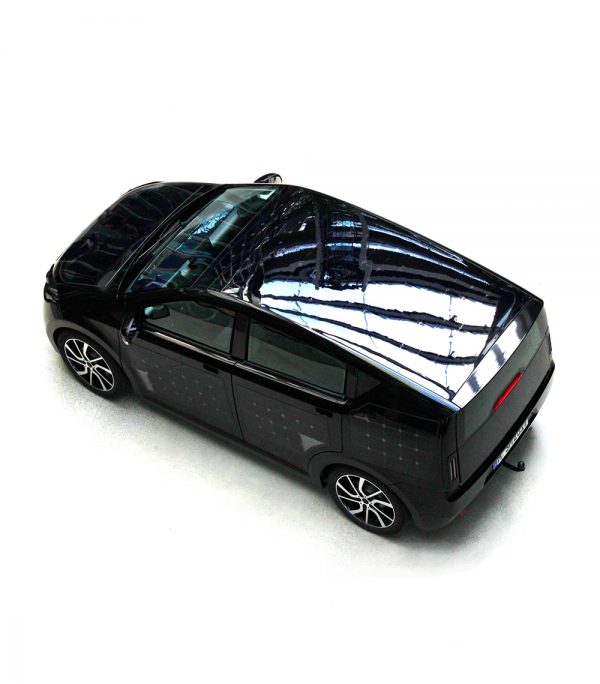
Solar powered cars generally face one glaring, gamestopping hurdle: Today’s solar cells don’t produce enough power to drive a standard-sized car any distance. That would take more solar cells than there is space on top of a car.
Don’t tell that to Sono Motors, though. The Munich, Germany-based company, plans to bring a car covered with solar panels to production in Europe late this year, and to reach full production toward the end of 2020.
There’s a caveat, of course: Its initial Sion model can only cover an average of about 21 miles (34 kilometers) on solar power, on an average day in Germany.
With a 35-kwh battery, though, it provides plenty of buffer for cloudy days and a total plug-in range of 158 miles. Most Germans drive only 14 miles a day, the company says, and few have garages or even private parking spaces where they can install a charger, so having a modest solar charging capacity can alleviate the need for daily charging.
Sono Sion solar assisted electric car
Green Car Reports caught up with founders Jona Christians and Laurin Hahn, both young men barely out of their twenties, at the company’s small office headquarters in Munich last month, to catch up on Sono’s latest plans and progress.
The pair started Sono in 2013, when they looked at what was happening with global warming and decided change was happening too slowly. “The solutions being offered weren’t radical enough,” said Christians.
They recognized the big hurdles for EVs were range, price, and infrastructure, and they set about finding a single solution that could tackle all three.
What the executives are most proud of are Sono’s proprietary new solar cells, which will be integrated into the surface of the body—roof, hood, doors, fenders, and tailgate—rather than stuck on as on the existing prototype. The new cells are visible—barely—in Sion’s virtual body panels.

Sono Sion solar charged electric car
It's easy to write off new startup automakers because the funding hurdles to bring a new car to production are enormous. But with several former auto executives from Daimler and Opel running operations, financing, and technology, Sono has made several serious moves to minimize the risk and intensive need for capital.
For starters, the initial car will be available only in Europe, where crash standards are easier to meet for small, light vehicles. That will save millions in development costs. The vast majority of deposits (80 percent) are from Germany, says COO Ulrich Hoernke.
Also, the polymer body panels, even with embedded solar panels, cost only 1 percent as much to make as steel after accounting for buying stamping dies to bend steel body panels, said Christians. Those body panels will be impregnated with color, not painted, also saving enormous manufacturing costs. Thomas Haupsch, Sono’s chief operating officer, says 80 percent of the energy used in traditional car factories is in the paint shop.

Sono Sion solar assisted electric car
The Sion will come in only one configuration, much like the Ford Model T: Sono surveyed its 10,000 deposit holders whether they wanted white or black, and they narrowly chose black.
Rather than looking for land to build its own factory, Sono will build the Sion at a contract manufacturing facility, NEVS, the former Saab factory in Trollhatten, Sweden.
Sono is working on an all-new prototype that is more than an update of last spring’s prototype that sits in the Sono headquarters lobby. The biggest news (literally) is a stretch in the car’s overall length from 87 to 98 inches, to give the back seat enough legroom for adults to be comfortable, as well as a bit more cargo space. Large rear quarter windows behind the doors distinguish it visually.

Sono Motors headquarters
Sono is building a virtual prototype of the updated design, which visitors can examine inside virtual-reality goggles in its lobby “showroom.” The company says it is currently working to raise money to build a new prototype, which could prove a stumbling block for the car’s planned production timing. For now, the company continues to target production of 43,000 Sions a year in 2021.
Ulrich Hörnke, Sion’s chief financial officer, says deposits for the car average $1,300 apiece. (Potential buyers have to put down at least 1,000 euros to secure a spot on the list. Some have already paid the full target price of just over $23,000.) For that, Sono says, the car will come with all the latest active driver safety aids, such as automatic emergency braking and active lane control, but executives say they aren’t aiming for a full self-driving system.
Sono is counting on two new technologies to set the car apart. First, the company is developing its own touch-screen control system, which incorporates its own car-sharing service, so owners can make money sharing their cars.

Sono Sion charging interface
Secondly, the company uses its own vehicle-to-grid technology that produces AC output for the grid and allows one Sono to charge another. Germany is ahead of the U.S. in developing standards and technology for vehicle-to-grid charging.
As with any startup, its viability hinges on not just being able to win customer deposits but sustaining interest from larger investors. For now Sono says it is relying on dedicated, but anonymous angel investors. To develop a real, updated prototype and reach production in Sweden next year, it will need more of those—which seems to be the company’s main focus at the moment.
